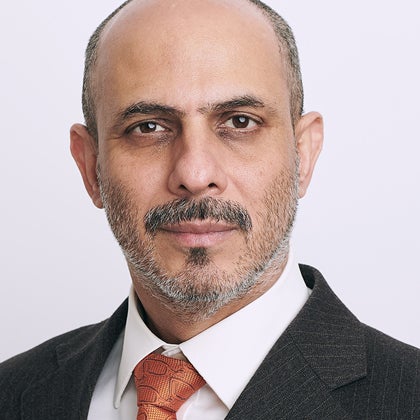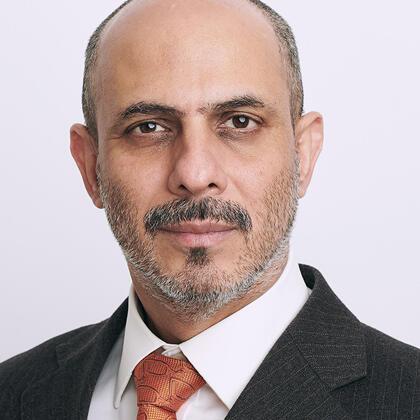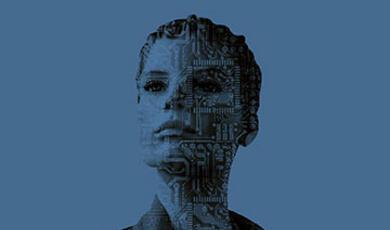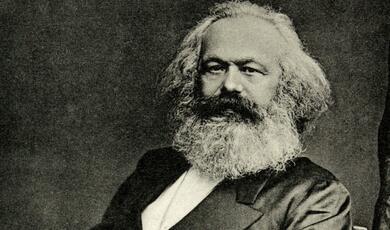Is Your Money Safe? Unveiling Hidden Conflicts in Finance
Share
- Details
- Text
- Audio
- Downloads
- Extra Reading
Think financial decisions are made by cool-headed robots? Think again! This lecture reveals a hidden truth: conflicts of interest between different groups, like CEOs and investors. We dissect how these "agency problems" can lead to risky choices, hidden fees, and even fraud. Learn how to navigate these conflicts and protect your hard-earned cash in the complex world of finance.
Download Text
Hidden Conflicts in Finance
Professor Raghavendra Rau
21 October 2024
Introduction
My name is Raghavendra Rau and I'm a professor at the University of Cambridge. This is the first in a series of lectures on the human side of finance.
Let's start by considering what finance is fundamentally about. At its core, finance revolves around promises. These are promises to provide a certain amount of money in the future in exchange for money today. This forms the basis of most financial instruments and transactions. The key question we face in finance is: What are these promises worth today? Examples of these promises include:
- Stocks: A company promises a share of future profits in exchange for investment capital today.
- Bonds: An entity promises to repay a loan with interest over time.
- Insurance: A company promises to pay for potential future losses in exchange for premiums now.
So how do we value these promises? There are two approaches:
- Rational classical finance: This approach assumes markets are efficient and participants are rational. It focuses on quantitative models and objective data. For example, what is called a Discounted Cash Flow (DCF) Model (usually the favourite approach for MBAs) is based on the time value of money. Here future cash flows are projected and then discounted back to present value. Similarly, another approach called comparative valuation (multiples) values assets based on how similar assets are priced in the market. It is a common approach in stock valuation using metrics like Price-to-Earnings (P/E) ratio.
- The human side of finance: This approach recognizes that markets are influenced by human behavior and psychology. It introduces questions of trust and information asymmetry. Is the person making the promise being truthful? It introduces the possibility of fraud - deliberate lying - or incomplete contracts, where loopholes allow one party to take advantage of another.
Let's start by looking at the basic cycle of finance, something that I have mentioned in previous years. We have firms that invest in assets - both current and fixed. These assets generate cash flows. Some of this cash is retained within the firm, some is paid out as dividends or debt payments to investors, and some goes to the government as taxes. The total value of the firm’s assets should, in theory, equal the total value of the firm to investors in the financial markets. This is where firms make promises and issue securities.
Financial intermediaries, such as banks, mutual funds, and insurance companies, play a crucial role in this cycle by facilitating the flow of money between those who have excess funds and those who need capital. They add value in several keyways.
First, they match people who have money with those who need it. This matching function reduces transaction costs and information asymmetries. For instance, a bank takes deposits from numerous savers and lends that money to borrowers. Without the bank, it would be incredibly difficult and time-consuming for individual savers to find creditworthy borrowers, negotiate terms, and manage the loans. For example, consider a small business owner who needs $100,000 to expand her operations. Instead of trying to find 100 individuals willing to lend her $1,000 each, she can simply approach a bank for a loan. The bank, in turn, uses the deposits of many savers to fund this loan. This process is much more efficient and less risky for all parties involved.
Second, intermediaries transform short-term deposits into long-term assets. This maturity transformation is a key function of banks. They take demand deposits, which can be withdrawn at any time, and use them to make long-term loans like mortgages or business loans. This allows the economy to fund long-term, productive investments while still providing liquidity to savers. For example, a bank might use the collective deposits of thousands of customers, each of whom can withdraw their money at any time, to fund 30-year mortgage loans. This transformation allows homeowners to buy houses without having to save the full purchase price, while still allowing depositors to access their money when needed.
Third, intermediaries provide risk transformation. They pool risks from many individuals or businesses, making the overall risk more predictable and manageable. Insurance companies are prime examples of this. By collecting premiums from many policyholders, they can pay out claims to the few who experience losses, effectively spreading the risk across a large group.
Fourth, financial intermediaries create economies of scale in information production and processing. They have the resources and expertise to analyse complex financial information, which individual investors might find difficult or costly. For instance, a mutual fund can afford to employ teams of analysts to research hundreds of stocks, providing small investors access to professional money management they couldn't achieve on their own.
Lastly, intermediaries provide liquidity to the market. They stand ready to buy or sell assets, which helps to ensure that investors can quickly convert their investments into cash when needed. This is particularly important in times of market stress. For example, market makers in the stock market continually quote prices at which they will buy or sell shares, helping to keep the market liquid and efficient.
To put in simply, financial intermediaries grease the wheels of the economy, making it possible for money to flow efficiently from those who have it to those who can use it productively.
Principal-Agent Problems
What causes the wheels of the economy to squeak? One answer is the principal-agent problem, a key concept in understanding hidden conflicts. The principal-agent problem is a fundamental issue in finance and economics that arises when one party (the agent) is expected to act in the best interest of another party (the principal) but may have incentives to act otherwise. This problem occurs due to differences in information and objectives between the two parties.
In a typical principal-agent relationship, the principal hires or engages the agent to perform a task or make decisions on their behalf. The principal often lacks the expertise or information that the agent possesses, creating a situation of asymmetric information. This information imbalance can lead to conflicts of interest and potential exploitation.
Basically:
- The principal needs something done.
- The agent is supposed to do the work for the principal.
- The principal lacks the expertise or information that the agent possesses.
This creates a situation of asymmetric information, where one party (the agent) knows more than the other (the principal).
A common example in corporate finance is the relationship between shareholders (principals) and company executives (agents). Shareholders invest in a company and expect the executives to manage the company in a way that maximizes shareholder value. However, executives may have their own interests, such as job security, higher salaries, or personal prestige, which might not always align with maximizing shareholder value. For instance, a CEO might choose to invest in a flashy new headquarters building to boost their own ego and status, even if that money could be better spent on research and development or returned to shareholders as dividends. The shareholders, who don’t have day-to-day insight into the company’s operations, may find it difficult to determine whether such decisions are truly in their best interest.
Another example of the principal-agent problem occurs in the real estate market. When you hire a real estate agent to sell your house, you (the principal) want to get the highest possible price for your property. The agent, however, might be more interested in making a quick sale to earn their commission. They might advise you to accept a lower offer to close the deal faster, even if waiting longer could potentially yield a higher price.
In the investment management world, the principal-agent problem is particularly prevalent. When you invest in a mutual fund, you’re essentially hiring fund managers to invest your money on your behalf. You want them to maximize your returns while managing risk appropriately. However, fund managers might be more focused on short-term performance to attract new investors or earn performance bonuses, even if this strategy isn't optimal for long-term investors.
The principal-agent problem can also manifest in government and public policy. Elected officials (agents) are supposed to act in the best interests of their constituents (principals). However, they may sometimes prioritize their own re-election prospects or special interest groups over the broader public good.
In the context of our finance cycle, who might be the agent? Agents are everywhere. For example, an agent could be:
- The bank that keeps your money safe
- The mutual fund that invests your money
- The hedge fund (if you're very wealthy)
- The private equity firm
- The manager who does the actual investing
All of these entities act as agents on behalf of their clients, the principals. To mitigate the principal-agent problem, various mechanisms have been developed. These include performance-based compensation, increased transparency and reporting requirements, independent oversight boards, and legal frameworks that enforce fiduciary duties. However, completely eliminating the principal-agent problem is challenging, as it’s often impossible for principals to fully monitor and control the actions of their agents without incurring prohibitive costs.
Controlling the agent
Given this potential for conflict, how do we control the agent? There are several mechanisms. These methods aim to align the interests of the agent with those of the principal and reduce the likelihood of opportunistic behavior:
- Explicit contracts: One primary method of control is through explicit contracts. These are legally binding agreements that specify the duties, responsibilities, and expected outcomes of the agent's actions. For example, an employment contract for a CEO might include specific performance targets related to company profitability, stock price, or market share. If these targets are met, the CEO might receive a bonus or other incentives. If not, there could be penalties or even termination of employment. However, it's important to note that contracts can never cover all possible scenarios, leaving room for interpretation and potential conflicts.
- Legal regulations: Legal regulations also play a crucial role in controlling agents. In the financial sector, for instance, laws like the Sarbanes-Oxley Act in the United States impose strict reporting requirements on corporate executives to prevent fraudulent activities. These regulations aim to increase transparency and hold agents accountable for their actions. Similarly, insider trading laws prevent corporate insiders from using non-public information for personal gain at the expense of shareholders. Another control mechanism is the concept of fiduciary responsibility. This legal obligation requires the agent to act in the best interests of the principal, even if it conflicts with the agent's personal interests. For example, investment advisors have a fiduciary duty to their clients, meaning they must recommend investments that are suitable for the client's needs and risk tolerance, rather than those that might generate higher commissions for the advisor.
- Implicit contracts: Reputation can also act as a powerful control mechanism, especially in industries where repeat business and long-term relationships are important. An agent who develops a reputation for trustworthiness and competence is more likely to attract and retain principals. Conversely, an agent known for self-serving behavior may find it difficult to secure future opportunities. In some cases, implicit contracts based on trust and repeated interactions can be effective in controlling agents. For example, a long-standing relationship between a business owner and their accountant might rely more on mutual trust and understanding than on explicit contractual terms.
It's worth noting that no single method of controlling agents is perfect, and a combination of these approaches is often necessary. The effectiveness of these control mechanisms can vary depending on the specific context, industry, and nature of the principal-agent relationship.
When do implicit contracts make sense?
When parties interact repeatedly, it builds trust and reduces the need for explicit contracts. Implicit contracts make sense in situations where trust, reputation, and repeated interactions play a crucial role. These unwritten agreements often emerge when formal contracts are too costly, inflexible, or impractical to implement.
In the business world, implicit contracts are common in long-term relationships between firms and their employees. For instance, a company might not explicitly promise lifetime employment, but there may be an unwritten understanding that loyal, high-performing employees will be retained even during tough economic times. This implicit contract encourages employees to invest in firm-specific skills and knowledge, benefiting both the employee and the company in the long run.
Another example of implicit contracts can be found in customer relationships. A regular customer at a local restaurant might expect preferential treatment, such as a better table or occasional free desserts, without any formal agreement. The restaurant provides these perks to maintain customer loyalty, while the customer continues to patronize the establishment and potentially brings in new customers through word-of-mouth recommendations.
Implicit contracts also make sense in situations where the quality of a product or service is difficult to specify or measure. In professional services like legal or consulting work, clients often rely on the implicit understanding that the professional will act in their best interests and provide high-quality service, even when the exact nature of the work can't be fully defined in advance.
In academia, there is often an implicit contract between professors and their graduate students. While there may be some formal requirements, much of the mentoring relationship is based on unwritten expectations of support, guidance, and collaborative research opportunities.
Implicit contracts are particularly valuable in rapidly changing environments where formal contracts would quickly become obsolete. In the tech industry, for example, companies might have implicit agreements with their software developers about flexible working hours or the ability to work on side projects, understanding that this flexibility can lead to increased innovation and job satisfaction.
However, it's important to note that implicit contracts have limitations. They're not legally enforceable and rely heavily on mutual trust and shared understanding. When one party violates an implicit contract, it can lead to a breakdown in the relationship and potential reputational damage.
The effectiveness of implicit contracts often depends on the cultural and social context. In societies with strong social norms and high levels of trust, implicit contracts tend to work well. In contrast, in environments where trust is low or opportunistic behavior is common, explicit contracts might be more necessary.
As businesses and economies have evolved, the role of implicit contracts has changed. In earlier eras, when business was more localized and personal relationships were key, implicit contracts were often sufficient. With globalization and increased mobility, there's been a shift towards more formal, explicit contracts in many areas. However, implicit contracts continue to play a crucial role in many business relationships, particularly where flexibility, trust, and long-term mutual benefit are valued over rigid, short-term agreements.
How do banks add value?
Banks add value to the economy primarily by acting as financial intermediaries. They bridge the gap between those who have excess funds and those who need capital, facilitating the efficient allocation of resources in the economy.
As I mention above, one of the primary ways banks add value is by matching borrowers to lenders. Instead of individuals having to search for someone willing to lend them money, or savers having to find trustworthy borrowers, banks perform this function. They take deposits from savers and lend that money to borrowers. This process reduces transaction costs and information asymmetries. Banks also transform maturities. They take short-term deposits, like checking and savings accounts that can be withdrawn at any time, and use them to make long-term loans, such as mortgages or business loans. This maturity transformation allows for long-term investments in the economy while still providing liquidity to depositors.
Another way banks add value is by taking on and managing risk. They assess the creditworthiness of borrowers and bear the risk of default. This risk assessment and management allow savers to indirectly lend money to a diverse group of borrowers without having to personally evaluate each one. For example, when you deposit money in a savings account, you don't need to worry about the specific loans the bank makes with that money. Banks also provide liquidity to the economy. They ensure that depositors can access their funds when needed, even though much of that money is lent out. This liquidity provision is crucial for the smooth functioning of the economy. Imagine if every time you needed cash, you had to wait for someone to repay their loan to the bank.
Banks also facilitate payments in the economy. They provide checking accounts, debit cards, online banking, and other services that make it easy for individuals and businesses to transact. This payment facilitation reduces the friction in economic exchanges and supports economic activity. Finally, banks play a role in creating money through the fractional reserve banking system. When a bank receives a deposit and lends out a portion of it, it effectively increases the money supply. This process, when managed responsibly, can support economic growth by increasing the availability of credit in the economy. In this process, they serve as a transmission mechanism for monetary policy. When central banks adjust interest rates or implement other monetary policies, commercial banks are often the channel through which these policies affect the broader economy.
How do banks make money?
Banks make money through several key mechanisms, primarily by leveraging the deposits they receive from customers. The fundamental principle behind a bank's profitability is the spread between the interest rates they pay on deposits and the rates they charge on loans.
When you deposit money into a savings account, the bank pays you a relatively low interest rate. However, the bank doesn't simply hold onto this money. Instead, it lends out a significant portion of these deposits to other customers in the form of loans, such as mortgages, auto loans, or business loans. These loans are issued at much higher interest rates. The difference between what the bank pays in interest on deposits and what it earns in interest on loans is called the net interest margin, and it's a primary source of bank profits.
The process of taking in deposits and making loans effectively allows banks to create money, a concept known as the money multiplier effect. For instance, if a bank receives a $1,000 deposit and lends out $900, keeping $100 as a reserve, that $900 loan may end up as a deposit in another bank, which can then lend out a portion of it, and so on. This process increases the money supply in the economy and can be quite profitable for banks when managed correctly.
However, banking is not without risks. If too many loans default, or if there's a sudden rush of withdrawals (a "bank run"), a bank can face serious financial difficulties.
Stopping bank runs
Bank runs are a serious threat to the banking system and can have devastating effects on the broader economy. They occur when a large number of depositors, fearing that their bank might become insolvent, rush to withdraw their funds all at once. This phenomenon can quickly become a self-fulfilling prophecy, as the sudden demand for withdrawals can cause even a healthy bank to fail.
A classic example of a bank run is the Great Depression era bank panics in the United States. In 1933, fears about bank solvency led to widespread withdrawals, causing many banks to collapse. More recently, in 2007, Northern Rock in the UK experienced a bank run when news of its financial troubles led to long queues of customers trying to withdraw their savings.
The fundamental problem that leads to bank runs is the mismatch between a bank's assets and liabilities. Banks typically hold long-term, illiquid assets (like mortgages) but have short-term liabilities (deposits that can be withdrawn on demand). This mismatch makes banks vulnerable to sudden, large-scale withdrawals.
To address this vulnerability, several solutions have been implemented over time. One of the most significant is deposit insurance. In the United States, the Federal Deposit Insurance Corporation (FDIC) was established in 1933 in response to the Great Depression bank runs. The FDIC currently insures deposits up to $250,000 per depositor, per bank. This insurance dramatically reduces the incentive for depositors to rush to withdraw their funds, as they know their money is protected even if the bank fails.
However, deposit insurance isn't without its drawbacks. It can create moral hazard, where banks might be incentivized to take on more risk, knowing that depositors are protected. To counter this, regulators have implemented various rules and regulations to control bank behavior.
Another solution is the implementation of capital requirements. Banks are required to maintain a certain level of capital relative to their risk-weighted assets. This serves as a buffer against losses and helps ensure that banks remain solvent even in times of stress. The Basel Accords, international banking regulations, set standards for these capital requirements.
Liquidity requirements are another tool used to prevent bank runs. These rules require banks to hold a certain amount of easily sellable assets that can be quickly converted to cash in case of increased withdrawal demands. The Liquidity Coverage Ratio, introduced after the 2008 financial crisis, is an example of such a requirement.
Central banks also play a crucial role in preventing and managing bank runs. They act as a "lender of last resort," providing emergency loans to solvent banks facing temporary liquidity problems. This function helps prevent temporary liquidity issues from turning into solvency crises. The Federal Reserve's actions during the 2008 financial crisis, where it provided extensive liquidity support to the banking system, is a prime example of this role in action.
In extreme cases, governments may step in with more direct interventions. During the 2008 crisis, for instance, the U.S. government implemented the Troubled Asset Relief Program (TARP), which involved directly injecting capital into banks to shore up their balance sheets and restore confidence in the banking system.
More recently, technology has introduced new challenges and solutions in managing bank runs. Digital banking has made it easier for depositors to withdraw funds quickly, potentially accelerating the pace of a bank run. However, it has also made it easier for regulators to monitor bank activities and for banks to communicate with their customers, potentially helping to quell panic before it spreads.
Despite these various measures, the risk of bank runs hasn’t been entirely eliminated. The collapse of Silicon Valley Bank in 2023 demonstrated that even in a heavily regulated environment, unique circumstances can still lead to rapid loss of confidence and subsequent bank failure. This event has sparked renewed discussions about the adequacy of current regulations and the need for potential reforms in the banking sector.
Stablecoins and private money
Stablecoins and private money represent a new frontier in the financial world, blending traditional finance concepts with emerging technologies. Stablecoins are a type of cryptocurrency designed to maintain a stable value, usually pegged to a fiat currency like the US dollar. They aim to combine the stability of traditional currencies with the speed and borderless nature of cryptocurrencies.
Tether (USDT) is one of the most well-known stablecoins. It claims to be backed one-to-one by US dollar reserves, meaning for every USDT in circulation, Tether supposedly holds one US dollar in reserve. However, the exact nature of these reserves has been a subject of controversy and scrutiny.
Another prominent example is USD Coin (USDC), which is issued by a consortium including Coinbase and Circle. USDC aims for greater transparency by regularly publishing attestations of its reserves. These stablecoins are widely used in cryptocurrency trading, often serving as a bridge between traditional fiat currencies and more volatile cryptocurrencies like Bitcoin or Ethereum.
The concept of stablecoins isn't entirely new; it shares similarities with historical private currencies. In the 19th century United States, for instance, many banks issued their own notes, which were supposed to be redeemable for gold or silver. This system, known as "free banking," had its own set of challenges, including bank runs and counterfeiting.
Modern stablecoins face similar issues to traditional banks, particularly the risk of "runs." If a large number of stablecoin holders try to redeem their coins for fiat currency simultaneously, it could potentially lead to a collapse if the issuer doesn't have sufficient liquid reserves. This scenario played out with the TerraUSD stablecoin in 2022, which used an algorithmic method to maintain its peg rather than traditional asset backing. When confidence in the system faltered, it led to a rapid devaluation of the stablecoin and significant losses for holders.
Private money issuers, including stablecoin providers, make money in ways similar to traditional banks. They invest the reserves backing their coins, profiting from the interest or returns on these investments. For instance, if a stablecoin issuer holds $1 billion in reserves and earns 2% interest on these funds, that's $20 million in annual revenue. They may also charge transaction fees or earn income from related services.
However, the lack of comprehensive regulation in the stablecoin space has raised concerns. Unlike traditional banks, many stablecoin issuers aren't subject to regular audits or strict reserve requirements. This regulatory gap has led to calls for increased oversight to protect consumers and maintain financial stability.
The stablecoin market has grown significantly, with the total market capitalization of major stablecoins exceeding $100 billion as of 2024. This growth has implications for monetary policy and financial stability, as large stablecoin issuers could potentially influence money supply and credit creation in ways similar to traditional banks.
As the line between traditional finance and cryptocurrency blurs, regulators are grappling with how to approach these new forms of private money. The challenge lies in fostering innovation while ensuring consumer protection and maintaining financial stability.
Who controls the money supply?
Most of us think that the central bank controls the money supply by setting interest rates and printing money when necessary. Unfortunately, this is not true. In reality, most of the money in circulation is created by commercial banks through the process of lending. When a bank makes a loan, it doesn't transfer existing money from one account to another. Instead, it creates new money by crediting the borrower's account with a deposit. For example, when a bank approves a $200,000 mortgage, it doesn't take that money from other depositors. It creates a new deposit in the borrower's account, effectively bringing $200,000 of new money into existence.
This process is constrained by various factors, including the bank's capital requirements, the demand for loans, and the central bank's monetary policy. Central banks influence this process by setting interest rates and through open market operations, where they buy or sell government securities to affect the money supply. But they depend on estimating demand for bank loans to set interest rates. The demand for bank loans is set by estimates of what the interest rates are likely to be. Who controls what is not a clean cut story.
The Eurodollar market adds another layer of complexity to money creation. Eurodollars are U.S. dollar-denominated deposits held in banks outside the United States. Despite the name, they’re not limited to Europe; a Japanese bank in Tokyo holding dollar deposits would also be part of the Eurodollar market. The Eurodollar market emerged after World War II, partly as a result of the Marshall Plan, which led to a significant number of dollars circulating in Europe. It grew rapidly as banks and companies found it convenient to hold and trade dollars outside the U.S., away from domestic regulations. For instance, a German company might keep its dollar earnings in a London bank rather than converting them to euros or transferring them to a U.S. bank. This London bank can then lend these dollars to other entities, creating a parallel dollar-based financial system outside direct U.S. control.
The scale of the Eurodollar market is massive. As of 2024, it is estimated to be around 12.8 trillion dollars, which is about 64% of the U.S. money supply. This size gives the Eurodollar market significant influence on global interest rates and currency values. Eurodollars play a crucial role in international trade and finance. For example, an American company might borrow Eurodollars from a bank in London to finance a project in Asia, finding better rates or terms than they would from U.S. banks. The Eurodollar market also affects monetary policy. When the Federal Reserve changes interest rates, it doesn't just impact domestic U.S. banks; it also influences the vast Eurodollar market. This can lead to unintended consequences in global financial flows.
One key feature of the Eurodollar market is its lack of direct regulation by U.S. authorities. While individual banks are regulated in their home countries, the market as a whole operates with less oversight than the domestic U.S. banking system. This regulatory gap has been a source of concern, especially during financial crises. The 2008 financial crisis highlighted the importance of the Eurodollar market. Many non-U.S. banks had borrowed heavily in Eurodollars to invest in U.S. assets. When these assets lost value, it created a dollar shortage in the global banking system, exacerbating the crisis. The Federal Reserve had to extend dollar swap lines to foreign central banks to ease this shortage.
What can we conclude?
The evolution of financial systems has led to a more complex and interconnected global economy. In the past, financial relationships were often based on personal trust and implicit contracts. For example, a local banker might approve a loan based on their knowledge of the borrower's character and standing in the community. These relationships were largely informal and relied on repeated interactions and local reputation.
Today, the financial world operates on a much larger scale, with transactions occurring globally and often instantaneously. This shift has necessitated a move towards more explicit contracts and formal regulations. For instance, when you apply for a mortgage now, you're likely to encounter a standardized process with extensive documentation requirements, credit checks, and clearly defined terms and conditions.
However, this transition to more formal arrangements hasn’t eliminated hidden conflicts; in some ways, it has created new ones. The complexity of modern financial instruments can obscure risks and misalign incentives. Take the case of collateralized debt obligations (CDOs) in the lead-up to the 2008 financial crisis. These complex securities bundled various mortgage-related assets, and their structure made it difficult for many investors to fully understand the risks involved.
Information asymmetry remains a significant challenge in finance. In many cases, one party in a transaction has more or better information than the other. For example, a company issuing bonds may have a more accurate picture of its financial health than potential bondholders. This information gap can lead to mispricing of assets and misallocation of resources.
Behavioral biases also play a crucial role in modern finance. Even with access to information, individuals don't always make rational decisions. The phenomenon of retail investors piling into "meme stocks" based on social media hype, rather than fundamental analysis, is a recent example of how emotions and group behavior can drive financial decisions.
Regulations have evolved to address some of these issues, but they often lag behind financial innovations. The rapid rise of cryptocurrencies and decentralized finance (DeFi) platforms has created new challenges for regulators trying to protect consumers and maintain financial stability.
Moreover, attempts to regulate and formalize financial relationships can sometimes have unintended consequences. For instance, strict know-your-customer (KYC) regulations, designed to prevent money laundering, can inadvertently exclude legitimate customers from accessing financial services if they lack traditional documentation.
The globalization of finance has also created challenges in terms of regulatory arbitrage, where financial activities move to jurisdictions with lighter regulation. The growth of the Eurodollar market is a prime example of how financial activity can shift to avoid domestic regulations.
In conclusion, while the financial world has become more formalized and regulated, it has also become more complex. This complexity creates new opportunities for hidden conflicts and misaligned incentives. Understanding these dynamics is crucial for anyone participating in or studying modern financial markets. As financial systems continue to evolve, particularly with the advent of new technologies, the challenge will be to create frameworks that balance innovation with stability and fairness.
© Professor Raghavendra Rau, 2024
McWilliams, David, 2024, Money: A story of humanity, Simon and Schuster, UK.
Part of:
This event was on Mon, 21 Oct 2024
Support Gresham
Gresham College has offered an outstanding education to the public free of charge for over 400 years. Today, Gresham College plays an important role in fostering a love of learning and a greater understanding of ourselves and the world around us. Your donation will help to widen our reach and to broaden our audience, allowing more people to benefit from a high-quality education from some of the brightest minds.


 Login
Login







